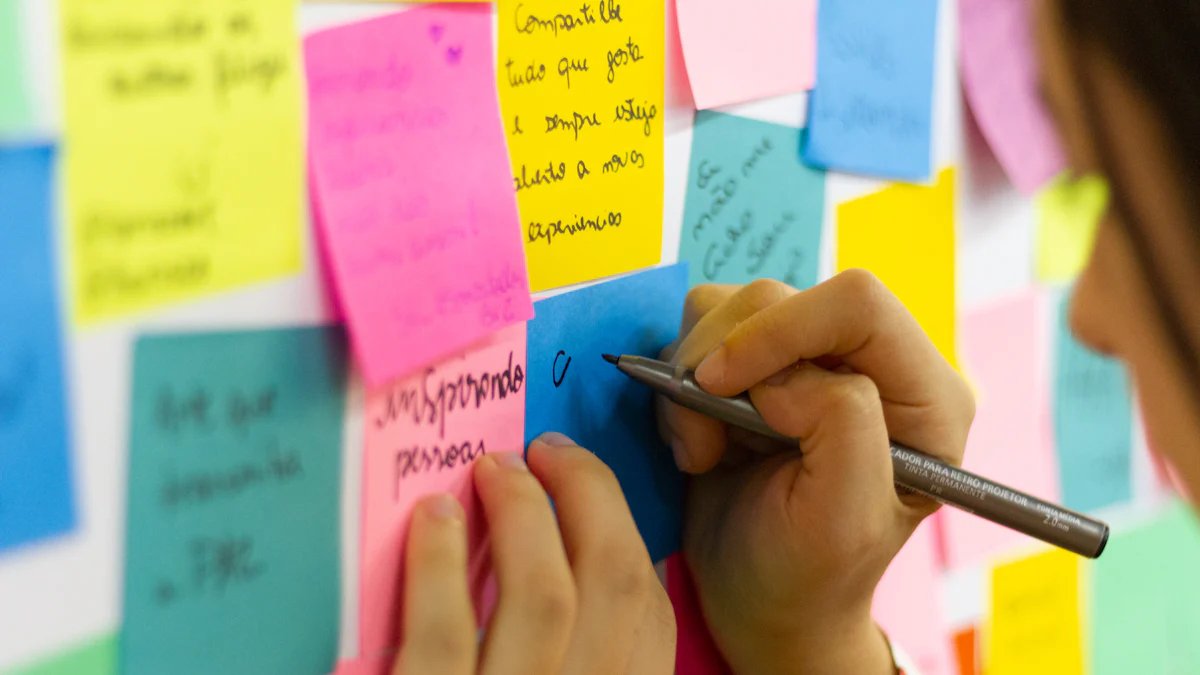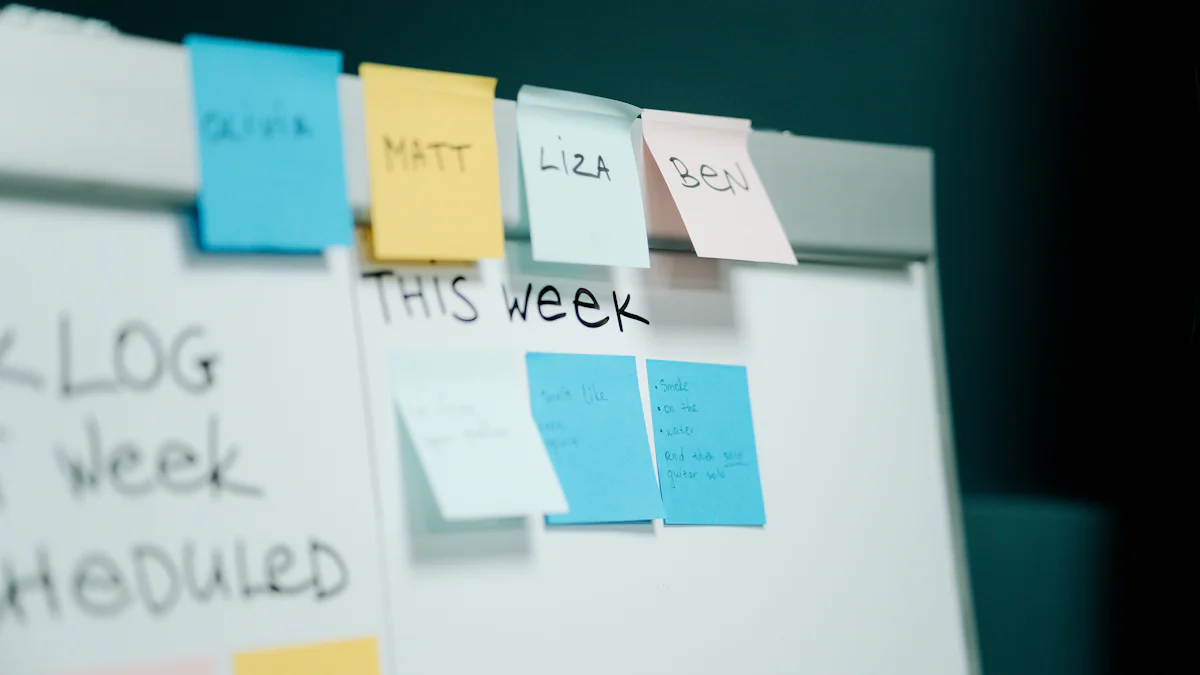What Problems Does Effective Note-Taking Solve

Effective note-taking solves several common challenges individuals face when processing information. It enhances memory retention by encouraging active engagement with material, which helps transfer knowledge into long-term memory. By organising information clearly, it reduces the risk of overload and improves efficiency.
Challenge | How Note-Taking Helps |
|---|---|
Structured notes highlight essential points, making them easier to identify and prioritise. | |
Increased Time Inefficiency | Organised notes save time by eliminating the need to decipher chaotic records. |
Long-Term Retention Challenges | Clear notes improve future reference value, aiding long-term memory retention. |
Effective note-taking also boosts productivity by maintaining focus during tasks. It supports learning by deepening understanding and fostering engagement with key concepts. Platforms like Suited Tutor offer tailored strategies through their Suited Tutor Courses to master this skill, ensuring learners can achieve academic success.
For those interested in pursuing a career in education, Suited Tutor Careers provides opportunities to help students excel. Additionally, the Suited Tutor Blog is a valuable resource for tips and insights on effective note-taking and other academic skills.
Key Takeaways
Good note-taking helps you remember, by keeping you involved.
Clear notes stop confusion and help you find main ideas.
Using visuals like mind maps makes hard ideas easier to grasp.
Reviewing notes often helps you remember and not forget.
Taking notes helps you stay focused and get more done.
Memory Retention and Effective Note-Taking
How Note-Taking Enhances Memory
Active Engagement with Information
Note-taking encourages active engagement with material, which significantly improves information retention. Writing notes requires the brain to process and organise information, making it easier to understand and remember. This process transforms passive listening into active learning, ensuring that key concepts are not overlooked. Cognitive processes such as encoding, storage, and retrieval play a vital role in this. Encoding converts information into a format suitable for storage, while retrieval techniques like active recall strengthen memory pathways.
The Role of Summarisation and Paraphrasing
Summarising information and paraphrasing during note-taking further enhance memory retention. These methods require individuals to condense and rephrase content in their own words, which deepens understanding. This approach not only highlights essential points but also reinforces neural connections, making it easier to recall information later.
The Science of Encoding and Recall
How Writing Reinforces Neural Pathways
The act of writing notes strengthens neural pathways in the brain. This reinforcement occurs because writing engages multiple senses, such as touch and sight, which enhances memory retention. Studies have shown that handwritten notes often lead to better retention compared to other methods. For example, research involving 33 students revealed that typing notes resulted in the highest memory recognition scores.
Study Focus | Methodology | Key Findings |
|---|---|---|
Impact of Note-Taking Mediums on Memory Recognition | 33 students aged 13-18 watched a video and took notes using typing, handwriting, or no notes. Assessment scores were analysed using ANOVA. | Typing notes resulted in the highest memory retention among students. |
The Spacing Effect and Review Strategies
The spacing effect demonstrates that reviewing notes at intervals improves long-term retention. Spaced repetition, a strategy that involves revisiting information over time, strengthens memory recall. Regular review sessions ensure that information remains accessible and prevents forgetting. Combining this with active recall techniques creates a powerful method for retaining knowledge effectively.
Organisation and Clarity in Note-Taking
Managing Information Overload
Structuring Notes for Easy Retrieval
Effective note-taking provides a structured approach to organising information, making it easier to retrieve later. By arranging content logically, individuals can quickly locate key points without sifting through irrelevant details. Techniques such as using headings, bullet points, and numbering systems help create a clear hierarchy within notes. This structure ensures that essential information remains accessible, reducing the time spent searching for specific details. For example, students can group related concepts under subheadings, which simplifies revision and enhances comprehension.
Categorising and Prioritising Key Points
Categorising information during note-taking helps break down complex topics into manageable sections. By grouping similar ideas together, learners can identify patterns and relationships between concepts. Prioritising key points further refines this process by highlighting the most critical information. Colour-coding or using symbols can visually differentiate between primary and secondary details, ensuring that the most important content stands out. This method not only reduces cognitive load but also improves focus during study sessions.
Visual Note-Taking for Clarity
Using Mind Maps and Diagrams
Visual note-taking transforms traditional methods by incorporating elements like drawings, symbols, and diagrams. Mind maps, for instance, organise information around a central topic, making it easier to see connections between ideas. Other techniques, such as brace maps and flow charts, break down big ideas into smaller parts or illustrate processes visually. These methods enhance understanding by combining text with images, creating a mental map that is easier to navigate. Visual notes also boost productivity by making the note-taking process more engaging and efficient.
Avoiding Cognitive Overwhelm with Visual Notes
Visual notes simplify complex information, reducing the risk of cognitive overwhelm. By presenting data in a non-linear format, they allow learners to focus on one section at a time. This approach encourages creativity and engagement, as individuals can express their ideas visually. For example, a student revising for an exam might use diagrams to summarise a topic, which makes the material more memorable. Visual note-taking not only aids comprehension but also fosters a deeper connection with the content.
Productivity and Focus Through Note-Taking
Streamlining Task Management
Using Notes to Break Down Complex Tasks
Breaking down complex tasks into smaller, manageable steps becomes easier with effective note-taking. This approach allows individuals to focus on one aspect of a task at a time, reducing the feeling of being overwhelmed. Several strategies can assist in this process:
Active listening ensures that essential information is captured accurately.
Prioritising key points helps to focus on the most critical aspects of a task.
Mind mapping visually illustrates relationships between ideas, making it easier to organise thoughts.
The Cornell Method divides notes into sections, offering clarity and aiding retention.
By employing these techniques, learners can simplify intricate tasks and approach them systematically. This method not only enhances productivity but also ensures that no crucial details are overlooked.
Tracking Progress and Deadlines
Notes serve as a valuable tool for tracking progress and meeting deadlines. By recording milestones and setting clear objectives, individuals can monitor their achievements effectively. Colour-coded notes or symbols can highlight completed tasks, while pending ones remain visible for future action. This visual representation of progress fosters motivation and keeps learners on track.
Maintaining Concentration
The Role of Note-Taking in Active Listening
Note-taking plays a pivotal role in active listening. Writing down key points during a lecture or discussion ensures that the listener remains engaged. This practice encourages individuals to focus on the speaker’s words, reducing the likelihood of zoning out. Asking questions and seeking clarification further enhances understanding. Active listening, combined with effective note-taking, creates a dynamic learning environment where information is absorbed more efficiently.
Minimising Distractions During Learning
Distractions can hinder the learning process, but certain strategies can help minimise them. Tools like AI-powered transcription services allow learners to focus on discussions without the need for manual note-taking. Sharing lecture materials before or after class also aids preparation and engagement. Guided note-taking strategies, which provide a structured outline, help learners concentrate on key information. These methods ensure that attention remains on the content, improving comprehension and retention.
Learning and Comprehension with Visual Notes

Deepening Understanding
Connecting New Information to Existing Knowledge
Visual note-taking helps learners connect new information to what they already know. This process strengthens understanding by linking unfamiliar concepts to familiar ones. For example, a student studying biology might use a mind map to relate new terms like "photosynthesis" to previously learned topics such as "plant cells." These connections create a network of ideas, making it easier to recall information during exams or discussions. Visual notes, such as diagrams and flowcharts, also simplify complex topics, allowing learners to see relationships between ideas clearly. This approach aligns with the brain's natural preference for processing images, enhancing comprehension and retention.
Encouraging Critical Thinking Through Notes
Taking visual notes encourages critical thinking by prompting learners to analyse and interpret information. Instead of passively copying text, they must decide how to represent ideas visually. This process involves summarising key points, identifying patterns, and questioning the material. For instance, a history student might create a timeline to explore cause-and-effect relationships between events. By engaging with content in this way, learners develop a deeper understanding and improve their ability to evaluate information critically. Visual note-taking transforms studying into an active process, fostering intellectual growth and problem-solving skills.
Supporting Long-Term Learning
Reviewing Notes for Retention
Regularly reviewing visual notes is essential for long-term learning. Spaced repetition, a proven strategy, involves revisiting information at intervals to reinforce memory. Active recall, which requires retrieving information without prompts, further strengthens cognitive pathways. Scheduling consistent review sessions ensures that material remains fresh and prevents forgetting. For example, a student preparing for exams might review their notes weekly, focusing on diagrams and colour-coded sections to highlight key points. These strategies not only improve retention but also make studying more efficient and effective.
Adapting Notes for Different Learning Styles
Visual notes can be tailored to suit various learning styles, enhancing engagement and comprehension. Visual learners benefit from colour coding and diagrams, while kinesthetic learners might prefer interactive methods like creating physical models or drawing charts. Tech-savvy learners can use digital tools to organise notes and incorporate multimedia elements such as videos or images. These adaptations ensure that note-taking strategies align with individual preferences, making the learning process more enjoyable and productive. By catering to diverse needs, visual note-taking becomes a versatile tool for academic success.
Effective note-taking addresses critical challenges in both academic and professional settings. It enhances memory retention by promoting active engagement and regular review. Organising information reduces overload and ensures clarity, while structured notes improve focus and productivity. In professional contexts, it helps document key points and action items during meetings, adapting to specific needs. Long-term benefits include improved study efficiency, better collaboration, and the creation of valuable study guides. Research consistently links effective note-taking to enhanced comprehension and academic performance, making it an indispensable skill for success in learning and work environments.
FAQ
What is the primary purpose of effective note-taking?
Effective note-taking helps individuals organise and retain information. It transforms passive listening into active learning, making it easier to understand and recall key concepts. This skill supports productivity, focus, and long-term memory retention.
What are the best tools for visual note-taking?
Mind maps, diagrams, and flowcharts are excellent tools for visual note-taking. Digital platforms like Notion and Canva also provide templates for creating structured and visually appealing notes. These tools simplify complex information and enhance comprehension.
What strategies improve memory retention through note-taking?
Active engagement, summarisation, and spaced repetition strengthen memory retention. Writing notes by hand reinforces neural pathways, while reviewing them at intervals ensures long-term recall. Techniques like active recall further enhance the effectiveness of this process.
What are the benefits of categorising information in notes?
Categorising information simplifies complex topics by grouping related ideas. This method highlights patterns and relationships, making it easier to understand and prioritise key points. Colour coding or symbols can visually differentiate important details, reducing cognitive load.
What role does note-taking play in active listening?
Note-taking keeps individuals focused during discussions or lectures. Writing down key points ensures engagement and reduces distractions. This practice helps listeners process information effectively, fostering better understanding and retention of the material.
See Also
Harnessing Note-Taking Skills To Enhance Information Retention
Smart Study Strategies: Tips For Optimising Your Study Time
Overcoming Academic Hurdles: A Resource For Students And Educators
Addressing Online Learning Obstacles: Effective Solutions To Succeed
Adjusting To Online Learning: Embracing Varied Educational Approaches

